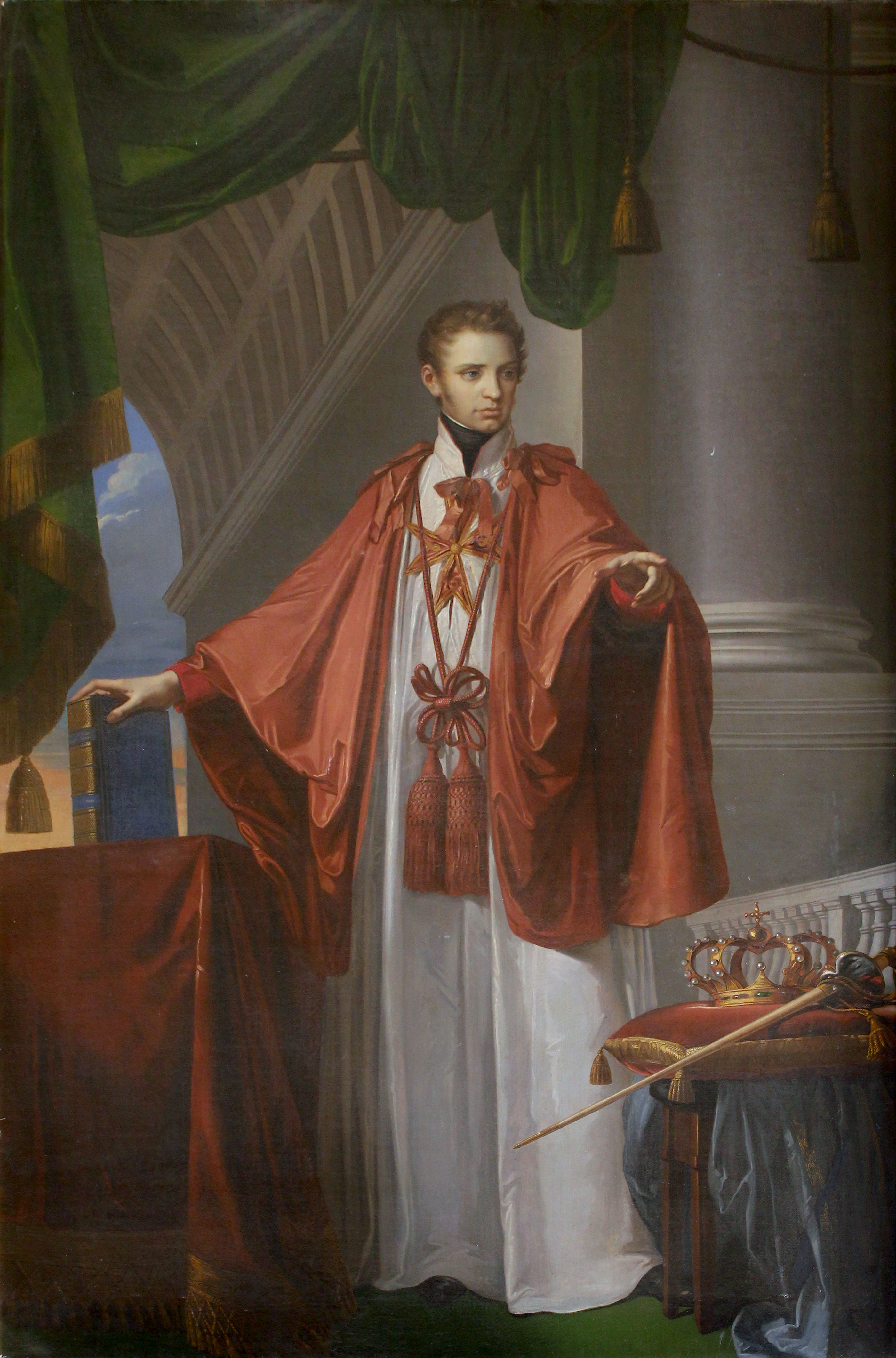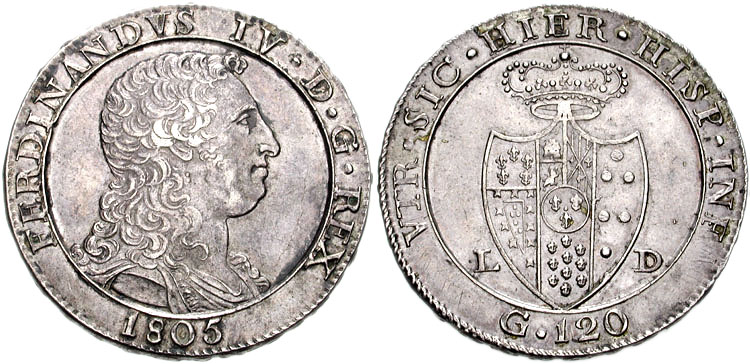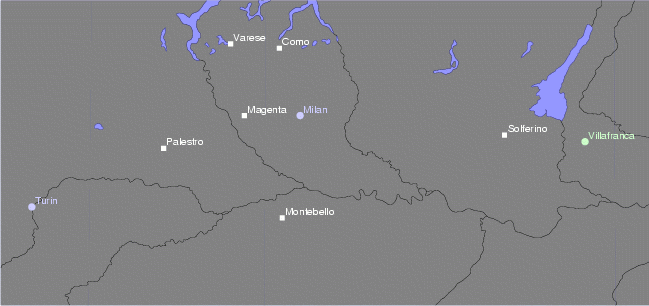|
Leopold II, Grand Duke Of Tuscany
Leopold II, , English: ''Leopold John Joseph Francis Ferdinand Charles''. (3 October 1797 – 29 January 1870) was Grand Duke of Tuscany from 1824 to 1859. He married twice; first to Maria Anna of Saxony, and after her death in 1832, to Maria Antonia of the Two-Sicilies. By the latter, he begat his eventual successor, Ferdinand. Leopold was recognised contemporarily as a liberal monarch, authorising the Tuscan Constitution of 1848, and allowing a degree of press freedom. The Grand Duke was deposed briefly by a provisional government in 1849, only to be restored the same year with the assistance of Austrian troops, who occupied the state until 1855. Leopold attempted a policy of neutrality with regard to the Second Italian War of Independence but was expelled by a bloodless coup on 27 April 1859, just before the beginning of the war. The Grand Ducal family left for Bologna, papal territory since the Congress of Vienna. Tuscany was occupied by soldiers of Victor Emmanuel II ... [...More Info...] [...Related Items...] OR: [Wikipedia] [Google] [Baidu] [Amazon] |
Pietro Benvenuti
Pietro Benvenuti (8 January 1769 – 3 February 1844) was an Italian Neoclassicism, Neoclassical painter. Biography Early life and education Born in Arezzo in Tuscany, he was influenced by the style of Jacques-Louis David. He was a student of the Accademia di Belle Arti Firenze, Academy of Fine Arts of Florence, then studied in Rome, 1792–1803, where he formed an informal academy with his friend of long standing, Vincenzo Cammuccini, and Luigi Sabatelli. Napoleonic period In 1807 he was recruited to become court painter to Elisa Bonaparte, Elisa Bonaparte Baciocchi and to direct the Florentine Academy of Fine Arts. In 1809 Napoleon commissioned him his most important work, ''The Oath of the Saxons'' (1809–12; Florence, Palazzo Pitti). This painting, for which Benvenuti did more than 19 sheets of drawings (Florence, Uffizi), is rigorously academic and again shows the influence of contemporary French art, notably François Gérard’s ''Ossian Evoking Phantoms'' (1801) and ... [...More Info...] [...Related Items...] OR: [Wikipedia] [Google] [Baidu] [Amazon] |
Roman Catholicism
The Catholic Church (), also known as the Roman Catholic Church, is the List of Christian denominations by number of members, largest Christian church, with 1.27 to 1.41 billion baptized Catholics Catholic Church by country, worldwide as of 2025. It is among the world's oldest and largest international institutions and has played a prominent role in the history and development of Western civilization.Gerald O'Collins, O'Collins, p. v (preface). The church consists of 24 Catholic particular churches and liturgical rites#Churches, ''sui iuris'' (autonomous) churches, including the Latin Church and 23 Eastern Catholic Churches, which comprise almost 3,500 dioceses and Eparchy, eparchies List of Catholic dioceses (structured view), around the world, each overseen by one or more Bishops in the Catholic Church, bishops. The pope, who is the bishop of Rome, is the Papal supremacy, chief pastor of the church. The core beliefs of Catholicism are found in the Nicene Creed. The ... [...More Info...] [...Related Items...] OR: [Wikipedia] [Google] [Baidu] [Amazon] |
Kingdom Of Etruria
The Kingdom of Etruria ( ; ) was an Italian kingdom between 1801 and 1807 that made up a large part of modern Tuscany. It took its name from Etruria, the old Roman name for the land of the Etruscans. History The kingdom was created by the Treaty of Aranjuez, signed at Aranjuez, Spain on 21 March 1801. In the context of a larger agreement between Napoleonic France and Spain, the Bourbons of Parma were compensated for the loss of their territory in northern Italy (which had been occupied by French troops since 1796). The King of Spain decided that his cousin Ferdinand, Duke of Parma had to cede his duchy to France, and in return his son Louis I was granted the Kingdom of Etruria (which was created from the Grand Duchy of Tuscany). Shortly after Ferdinand refused to leave, he suddenly died in suspect circumstances. To make way for the Bourbons, the Habsburg Grand Duke of Tuscany Ferdinand III was ousted and compensated with the Electorate of Salzburg by the Treaty of Lu ... [...More Info...] [...Related Items...] OR: [Wikipedia] [Google] [Baidu] [Amazon] |
Maria Carolina Of Austria
Maria Carolina of Austria (Maria Carolina Louise Josepha Johanna Antonia; 13 August 1752 – 8 September 1814) was Queen of Naples and Sicily as the wife of King Ferdinand IV and III, who later became King of the Two Sicilies. As ''de facto'' ruler of her husband's kingdoms, Maria Carolina oversaw the promulgation of many reforms, including the revocation of the ban on Freemasonry, the enlargement of the navy under her favorite, Sir John Acton, and the expulsion of Spanish influence. She was a proponent of enlightened absolutism until the advent of the French Revolution, when, in order to prevent its ideas gaining currency, she made Naples a police state. Born an archduchess of Austria, the thirteenth child of Empress Maria Theresa and Holy Roman Emperor Francis I, Maria Carolina married Ferdinand as part of an Austrian alliance with Spain, of which Ferdinand's father was king. Following the birth of a male heir in 1775, Maria Carolina was admitted to the Privy Counc ... [...More Info...] [...Related Items...] OR: [Wikipedia] [Google] [Baidu] [Amazon] |
Ferdinand I Of The Two Sicilies
Ferdinand I (Italian language, Italian: ''Ferdinando I''; 12 January 1751 – 4 January 1825) was Kingdom of the Two Sicilies, King of the Two Sicilies from 1816 until his death. Before that he had been, since 1759, King of Naples as Ferdinand IV and King of Sicily as Ferdinand III. He was deposed twice from the throne of Naples: once by the revolutionary Parthenopean Republic for six months in 1799, and again by a Invasion of Naples (1806), French invasion in 1806, before being restored in 1815 at the end of the Napoleonic Wars. Ferdinand was born in Naples as the third son of Charles III of Spain, King Charles VII and Maria Amalia of Saxony, Queen Maria Amalia. In August 1759, Charles succeeded his half-brother Ferdinand VI of Spain as King Charles III, but treaty provisions made him ineligible to hold all three crowns. On 6 October, he abdicated his Neapolitan and Sicilian titles in favour of his third son, Ferdinand, because his eldest son Infante Philip, Duke of Calabria, Ph ... [...More Info...] [...Related Items...] OR: [Wikipedia] [Google] [Baidu] [Amazon] |
Luisa Of The Two Sicilies
Luisa of Naples and Sicily (Luisa Maria Amalia Teresa; 27 July 1773 – 19 September 1802) was Grand Duchess of Tuscany as the wife of Ferdinand III, Grand Duke of Tuscany. She was born a princess of Naples and Sicily as a daughter born to Ferdinand I of the Two Sicilies and Maria Carolina of Austria. The French painter Élisabeth Vigée Le Brun was commissioned to paint portraits of Luisa and her elder siblings. Vigée Le Brun dubbed Luisa as the “most ugly” daughter of Ferdinand and Maria Carolina, and was even reluctant to finish her portrait. In matter of fact, many disliked Luisa’s appearance, and found her to be unattractive. Despite this, Luisa was known to be kindhearted to those around her. After eleven years of marriage, Luisa and her husband, Ferdinand, were unwillingly forced into exile upon the Treaty of Aranjuez in 1801. The couple soon fled to Vienna, Austria, where they would stay for nearly a year until Ferdinand compensated with the Electorate of ... [...More Info...] [...Related Items...] OR: [Wikipedia] [Google] [Baidu] [Amazon] |
Franz Joseph I Of Austria
Franz Joseph I or Francis Joseph I ( ; ; 18 August 1830 – 21 November 1916) was Emperor of Austria, King of Hungary, and the ruler of the Grand title of the emperor of Austria, other states of the Habsburg monarchy from 1848 until his death in 1916. In the early part of his reign, his realms and territories were referred to as the Austrian Empire, but were reconstituted as the dual monarchy of Austria-Hungary in 1867. From 1 May 1850 to 24 August 1866, he was also president of the German Confederation. In December 1848, Franz Joseph's uncle Emperor Ferdinand I of Austria, Ferdinand I abdicated the throne at Olomouc, as part of Minister President Felix zu Schwarzenberg's plan to end the Hungarian Revolution of 1848. Franz Joseph then acceded to the throne. In 1854, he married his first cousin Empress Elisabeth of Austria, Duchess Elisabeth in Bavaria, with whom he had four children: Archduchess Sophie of Austria, Sophie, Archduchess Gisela of Austria, Gisela, Rudolf, Crown Pri ... [...More Info...] [...Related Items...] OR: [Wikipedia] [Google] [Baidu] [Amazon] |
Napoleon III
Napoleon III (Charles-Louis Napoléon Bonaparte; 20 April 18089 January 1873) was President of France from 1848 to 1852 and then Emperor of the French from 1852 until his deposition in 1870. He was the first president, second emperor, and last monarch of France. Prior to his reign, Napoleon III was known as Louis Napoleon Bonaparte. He was born at the height of the First French Empire in the Tuileries Palace at Paris, the son of Louis Bonaparte, King of Holland (r. 1806–1810), and Hortense de Beauharnais, and paternal nephew of the reigning Emperor Napoleon I. It would only be two months following his birth that he, in accordance with Napoleon I's dynastic naming policy, would be bestowed the name of Charles-Louis Napoleon, however, shortly thereafter, Charles was removed from his name. Louis Napoleon Bonaparte was the first and only president of the French Second Republic, 1848 French presidential election, elected in 1848. He 1851 French coup d'état, seized power by force i ... [...More Info...] [...Related Items...] OR: [Wikipedia] [Google] [Baidu] [Amazon] |
Armistice Of Villafranca
The Armistice of Villafranca, concluded by Napoleon III of France and Franz Joseph I of Austria on July 11, 1859, set the stage for the end of the Second Italian War of Independence. It was the consequence of a unilateral decision by Second French Empire, France, which, at war alongside the Kingdom of Sardinia (1720–1861), Kingdom of Sardinia against Austria, needed to conclude peace because of the danger of the conflict spreading to Central Europe. The armistice of Villafranca caused the resignation of Piedmontese Prime Minister Camillo Benso, Count of Cavour, Cavour, who considered it a violation of the Franco-Sardinian alliance, Sardinian-French treaty of alliance. The latter provided for the cession of the entire Kingdom of Lombardy–Venetia, Kingdom of Lombardy-Venetia to Piedmont, unlike the terms of the armistice, which stipulated the cession of Lombardy alone (in its current extent except the Province of Mantua). The armistice, which King Victor Emmanuel II of Sardini ... [...More Info...] [...Related Items...] OR: [Wikipedia] [Google] [Baidu] [Amazon] |
Victor Emmanuel II
Victor Emmanuel II (; full name: ''Vittorio Emanuele Maria Alberto Eugenio Ferdinando Tommaso di Savoia''; 14 March 1820 – 9 January 1878) was King of Sardinia (also informally known as Piedmont–Sardinia) from 23 March 1849 until 17 March 1861, when he assumed the title of King of Italy and became the first king of an independent, united Italy since the 6th century, a title he held until his death in 1878. Borrowing from the old Latin title '' Pater Patriae'' of the Roman emperors, the Italians gave him the epithet of " Father of the Fatherland" (). Born in Turin as the eldest son of Charles Albert, Prince of Carignano, and Maria Theresa of Austria, Victor Emmanuel fought in the First Italian War of Independence (1848–1849) before being made King of Sardinia following his father's abdication. He appointed Camillo Benso, Count of Cavour, as his Prime Minister, and he consolidated his position by suppressing the republican left. In 1855, he sent an expeditionary corps to ... [...More Info...] [...Related Items...] OR: [Wikipedia] [Google] [Baidu] [Amazon] |
Bologna
Bologna ( , , ; ; ) is the capital and largest city of the Emilia-Romagna region in northern Italy. It is the List of cities in Italy, seventh most populous city in Italy, with about 400,000 inhabitants and 150 different nationalities. Its Metropolitan City of Bologna, metropolitan province is home to more than 1 million people. Bologna is most famous for being the home to the List of oldest universities in continuous operation, oldest university in continuous operation,Top Universities ''World University Rankings'' Retrieved 6 January 2010Hunt Janin: "The university in medieval life, 1179–1499", McFarland, 2008, , p. 55f.de Ridder-Symoens, Hilde [...More Info...] [...Related Items...] OR: [Wikipedia] [Google] [Baidu] [Amazon] |
Second Italian War Of Independence
The Second Italian War of Independence, also called the Sardinian War, the Austro-Sardinian War, the Franco-Austrian War, or the Italian War of 1859 (Italian: ''Seconda guerra d'indipendenza italiana''; German: ''Sardinischer Krieg''; French: ''Campagne d'Italie''), was fought by the Second French Empire and the Kingdom of Sardinia (1720–1861), Kingdom of Sardinia against the Austrian Empire in 1859 and played a crucial part in the process of Italian Unification. A year prior to the war, in the Plombières Agreement, France agreed to support Sardinia's efforts to expel Austria from Italy in return for territorial compensation in the form of the Duchy of Savoy and the County of Nice. The two states signed a military alliance in January 1859. Sardinia mobilised its army on 9 March 1859, and Austria mobilized on 9 April. On 23 April, Austria delivered an ultimatum to Sardinia demanding its demobilization. Upon Sardinia's refusal, the war began on 26 April. Austria invaded Sardin ... [...More Info...] [...Related Items...] OR: [Wikipedia] [Google] [Baidu] [Amazon] |









